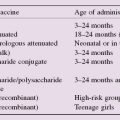It has long been suspected that the immune system may be able to recognize tumours and destroy them, as it does an allogeneic transplant or a parasite. There is now good evidence for the old hypothesis that naturally occurring tumours are eliminated or contained by the immune system (‘immune surveillance’). This hypothesis predicts that the frequency or progression of tumours increases in immunosuppressed individuals, a prediction that was initially borne out by studies on virally induced tumours, but has recently been extended to other more common types. Immunologists have therefore hoped that by appropriate stimulation of stronger innate or specific immunity (vaccination) the immune system could contribute to the eradication of cancer. In the last few years the enormous effort devoted to this problem has begun to be translated into some clinical successes and the mood is one of cautious optimism.
Many mechanisms can contribute to tumour control, including those of both innate (e.g. NK cells, macrophages, cytokines) and adaptive immunity. Attention has been focused on the identification of tumour-specific B- and T-cell antigens, although it now seems likely that tumour-associated antigens (TAAs), normal proteins found more frequently or at higher levels on tumour cells than on normal tissues, are equally important. Older research concentrated on the study of experimentally induced tumours in animals, but probably these very fast-growing and aggressive tumours are much easier for the immune system to recognize than the more typical human tumours that usually develop gradually over years or even decades. Instead, attempts are being made to identify the naturally occurring immune responses to tumours in patients with cancer.
Nevertheless, tumours continue to pose formidable challenges to the immunologist. In its relationship to the host, a tumour cell (yellow, brown and black in figure) is rather like a successful parasite, but with special additional features. Parasite-like mechanisms that help prevent elimination include weak antigenicity and extensive cross-reaction with self; immunosuppression and tolerance induction; release of soluble antigens; antigen–antibody complexes; and antigenic variation.
In mice, chemicals such as methylcholanthrene and benzopyrenes tend to induce tumours, each with unique ‘idiotypic’ antigens, whereas most of the common human cancers result from a slow and gradual accumulation of mutations in the genes of proteins that regulate the cell cycle. Such mutations can result in over-activation of a protein promoting cell growth (encoded by cellular oncogenes) or inactivation of a protein that normally slows down cell growth (encoded by tumour-suppressor genes). Some of these mutations are inherited, while others may result from exposure to chemicals in the environment. Normally, it requires several mutagenic events, which can occur over many decades, before a tumour develops. The mutated forms of these proteins may act as possible specific antigens for the adaptive immune system, especially the cytotoxic T cell.
Non-Specific Immunotherapy
BCG
Stay updated, free articles. Join our Telegram channel

Full access? Get Clinical Tree




